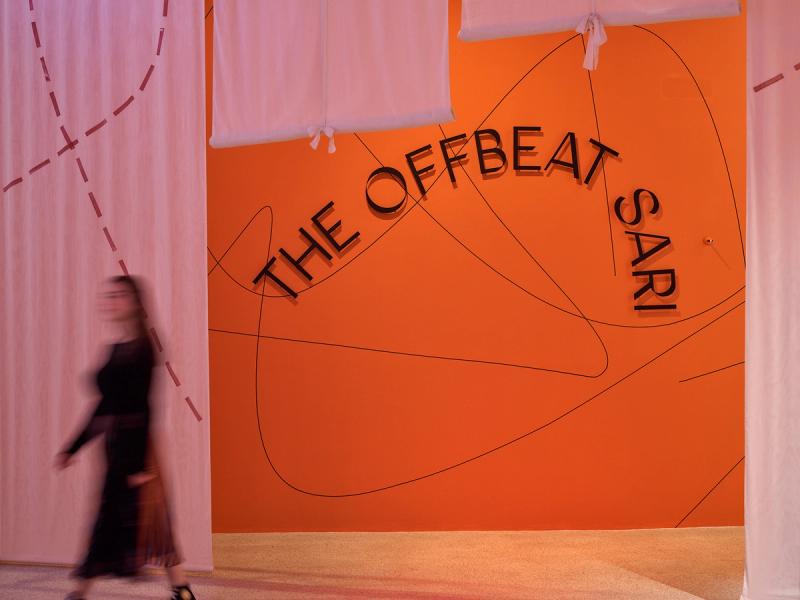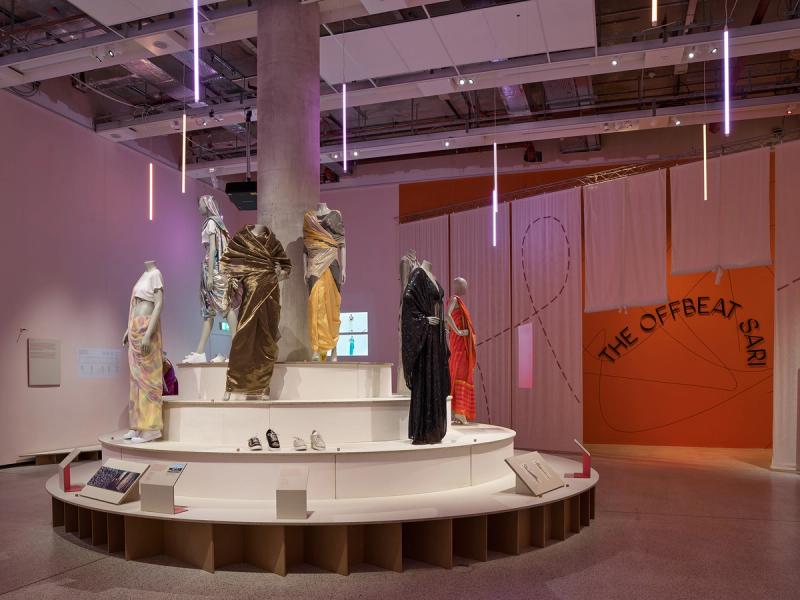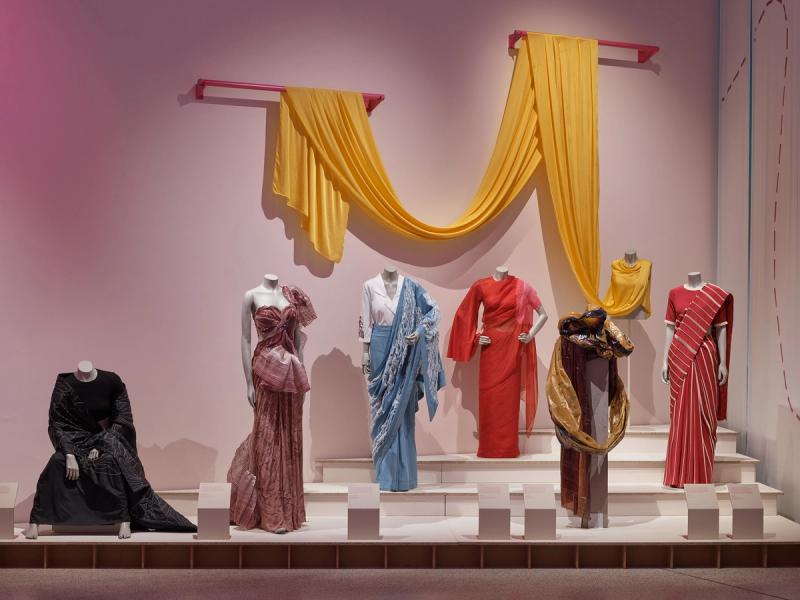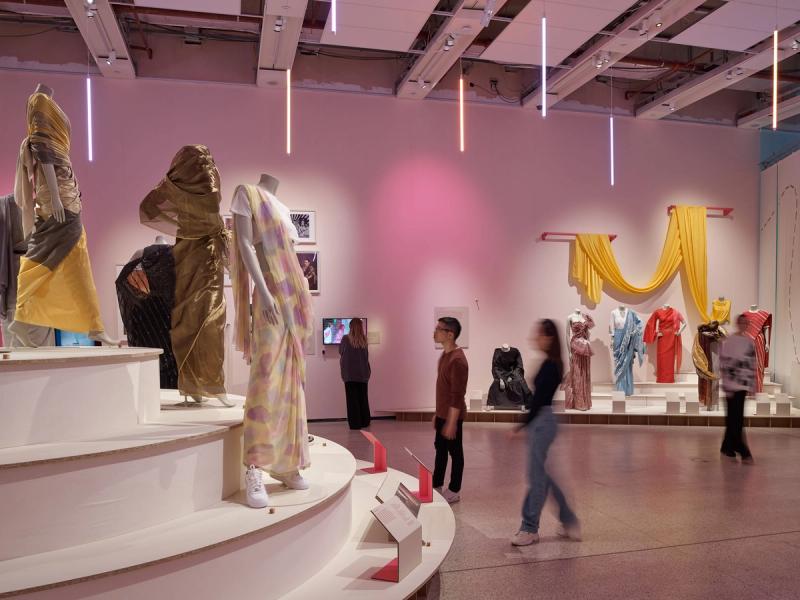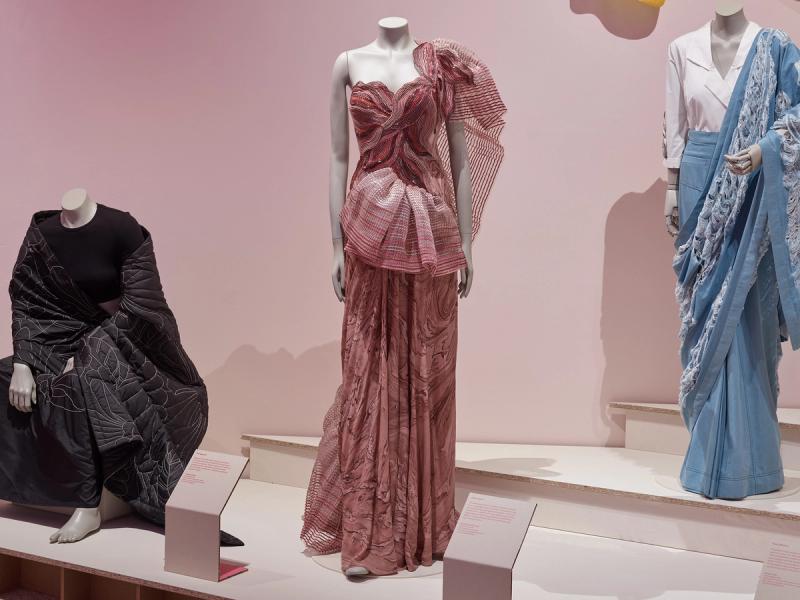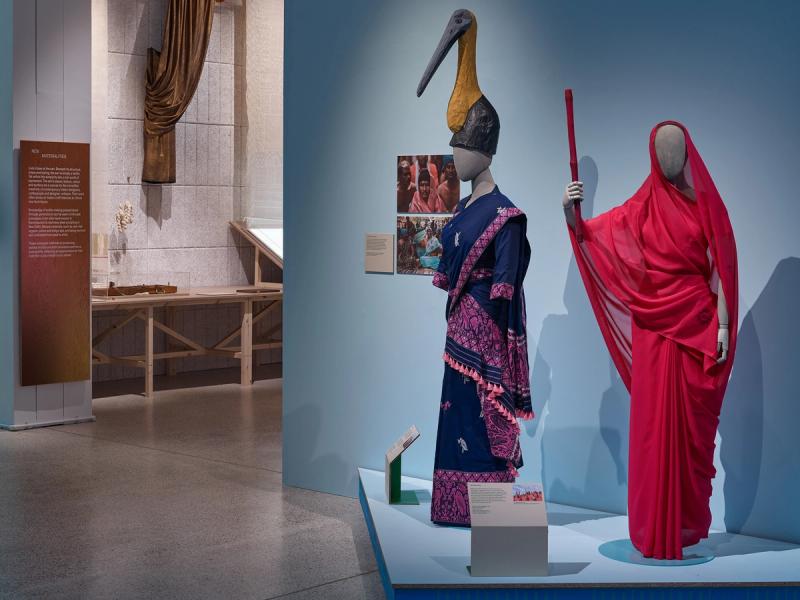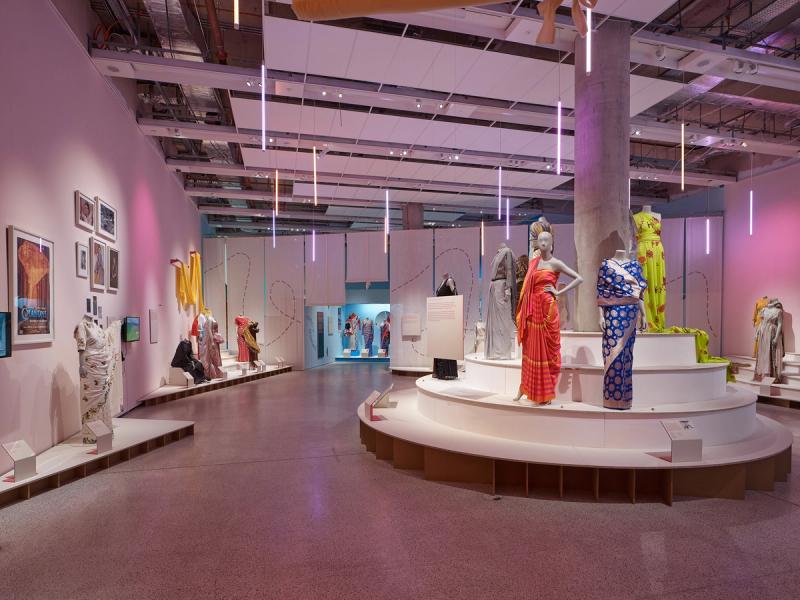
Priya Khanchandani on the Media That Inspires Her Curatorial Work
As head of curatorial at the Design Museum in London, Priya Khanchandani sees her role as that of a “cultural observer.” “I’m fascinated by the way in which visual culture manifests who we are, as a society, how that changes with different phenomena—political, social, cultural, environmental—and how that’s reflected in the material world in particular,” she says.
Previously the editor of the design and architecture magazine Icon, and before that the head of arts programs for the British Council in India, Khanchandani has throughout her career served as a conduit between creators, their ideas, and their audience. Now working in a gallery context, Khanchandani is able to indulge in her appreciation for objects in all of their 3-D splendor.
Khanchandani’s past exhibitions at the Design Museum span architecture, fashion, design, music, and pop culture, with subjects ranging from Amy Winehouse, to the artist and designer Yinka Ilori, to the fashion designer Bethany Williams. Most recently, she curated “The Offbeat Sari” (on view through Sept. 17), an exhibition exploring the sari as a symbol of India’s dynamism and evolution over time. “I've been thinking seriously for a long time—around twelve years—about how to represent contemporary India in a gallery for an audience based in London,” Khanchandani says. “Conventionally, India has been represented through more of a historic lens, or as a timeless nation, defined as being a place with a strong heritage of decorative art, rather than as a dynamic, living, breathing culture that is evolving now. My mission was to reposition that messaging, and to present an exhibition that positions India through a contemporary lens. The sari seemed to present an amazing opportunity to do that.”
Khanchandani’s desire to tell stories through objects stems, in part, from the media she turns to for inspiration, which, perhaps surprisingly, in large part comprises narrative literature—something far less visual and tangible than the design creations she works with. “I find books really rich,” she says. “[In curation], it’s about drawing out a narrative from the objects that surround you. With design, many times the objects are accessible to you, but you may not have read the story that they tell. The skill of storytelling—for me, anyway—comes from reading.” Khanchandani’s literary appetite is rather indiscriminate, including fiction, prose poetry, memoir, and design-related nonfiction (a current favorite of hers is the new book The Ugly History of Beautiful Things by Katy Kelleher).
Here, we speak with Khanchandani about her go-to authors, the radio programs she tunes in to daily, her longstanding love of European film, and why she’ll never tire of the shows Fleabag and Girls.
How do you start your mornings?
I generally start with my social media feeds. I tend to have quite a big diet of Instagram. It’s where I find out about things first, and where I find emerging talent. I think it’s where creative people find a voice before it’s been picked up by the official channels. Some of my favorite accounts are the meme accounts @sainthoax and @freeze_magazine, the South Asian talent account @diet_paratha, the interiors page @themodernhouse, and @nowness.
I then will read the culture pages of The Guardian, and I’ll look at the news headlines of the BBC to see what’s going on in the world. I generally look at the news-focused platforms in design—like Dezeen, for example—to find out the main news of the day. Now, of course, there’s Threads in addition to Twitter, so I’ll have a quick scroll through, but I try to keep that limited so it doesn’t consume my morning.
Do you listen to any podcasts?
There are some interesting design podcasts, like Design Emergency, which is run by two women who’ve been mentors and pioneers in my field, Paola Antonelli and Alice Rawsthorn. It’s about how design can help us to build a better future. There’s also On Design with Justyna Green, which I’ve had the pleasure to take part in in the past. But I also like podcasts not related to design, like We Can Do Hard Things hosted by Glennon Doyle. She’s very authentic and truthful, and not afraid to talk about the struggles of womanhood in a really human way, which I enjoy.
But in general, I’m more of a radio listener. When I wake up, I’ll ask my Google Home to switch on [BBC] Radio 4. Woman’s Hour might be on, or in the evenings, Front Row, which is a cultural review show, which I’ve been on quite a few times. I think Front Row is an opportunity to review what’s going on in the cultural scene, predominantly in the U.K. It [covers topics] across the visual arts, literature, and beyond. There are few platforms where that can be done in some depth, and it’s very well orchestrated and produced. It’s quite traditional in style, but it’s something I’ve listened to for many years.
Any favorite magazines?
I read The New Yorker. I really like Jia Tolentino, who writes about cultural phenomena. I also like their Books page.
I read Frieze, which is the main art magazine here, and is long-form. I tend to like long-form magazines. There’s a small magazine called Disegno, which I have contributed to over the years, and it’s beautifully made. Then I dip into a lot of other design magazines, whether it’s Wallpaper, The Architectural Review, or Dezeen. I’ll also dip in and out of other publications, like Vogue, as and when they’re interesting.
What books are you reading at the moment?
I’m reading Tomorrow, and Tomorrow, and Tomorrow by Gabrielle Zevin, which is an incredible novel about young people trying to accomplish their dreams, and the struggle of hard work that comes with that. I also love memoir, and recently liked This Is Not a Pity Memoir by Abi Morgan, which is the story of what happens when her husband’s body starts to shut down. She’s subsequently diagnosed with a rare form of breast cancer, sadly, but it’s very authentic and honest, and she has a wonderful way of writing and expressing that story.
In terms of design, I’m reading The Ugly History of Beautiful Things by Katy Kelleher, a writer who I actually used to commission when I was editor of Icon. She brings out what fascinates me most about objects. Also, Patch Work: A Life Amongst Clothes by Claire Wilcox, which combines memoir with that appreciation for objects that I find really compelling.
Any favorite TV shows?
One of my favorites in recent times is Insecure, the L.A.-based drama by Issa Rae. It’s about womanhood, and female friendship, and life in the city, and it’s brilliant. I watched it when I had Covid last year, and got through the whole thing. I also love anything by Michaela Coel, including I May Destroy You, which is a brilliant series. My all-time favorites are probably Fleabag and Girls. I appreciate their ability to not shy away from vulnerability and the realness of being a woman in the city.
What’s one book or other piece of media that you think everyone should consume?
The Year of Magical Thinking by Joan Didion.
That’s one of my top three favorite books.
It’s amazing. She has such a compelling voice, and I think she breaches…. Obviously it’s about losing her husband and her daughter—it’s about loss—but I think the integrity and the realness with which she expresses herself was something quite revolutionary.
I also love Bluets by Maggie Nelson. I love the way she turns prose poetry into a real form in literature, and the way that she uses the visual culture of this color as a lens through which to explore her life.
Maggie Nelson is also one of my favorites.
Yeah. Besides Bluets, I’ve only read The Argonauts.
Any favorite films?
I studied European languages for my first degree. Ever since then, I’ve been really into European film. I love anything by [Pedro] Almodóvar—most recently Parallel Mothers, which is about two mothers who bond in an unexpected way after giving birth on the same day and their babies are swapped. I actually watched it when I found out I was pregnant, but I didn’t know what [the film] was about. I also like a lot of Italian film, from [Michelangelo] Antonioni to [Federico] Fellini.
Any guilty pleasures?
My guilty pleasure is binging on architecture, interiors, and design programs. I’ve probably watched the whole of Grand Designs, which is a show about the building of homes in the U.K. I also like Interior Design Masters, which is presented by a colleague and woman I look up to, Michelle Ogundehin. I also watch The Great British Sewing Bee, which features a colleague of mine called Amber Butchart.
I also just love British comedy sitcoms. Recently, Motherland, which is a BBC comedy that demystifies motherhood, but is also very funny. Also for fun, we’ve been watching the Harry Potter films because they’re now on Netflix. I’ve also been watching Never Have I Ever. It explores the idea of Asianness in a Western society in a really fun way.
